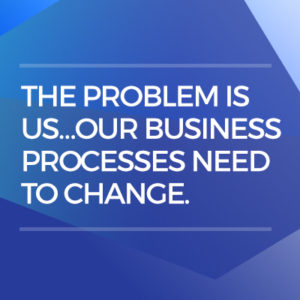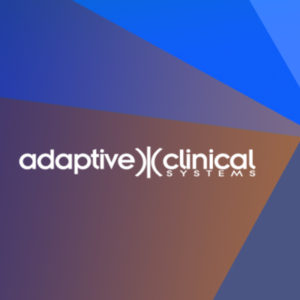We’re back from SCDM 2019 – a successful event where we spoke on eSource and listened in on insights of our peers. One of those insights was shared by Medrio CEO Mike Novotny who led a panel discussion on the topic of eSource, which we paraphrase:
“Our industry bemoans regulatory hurdles and how they slow the drug discovery and development process. In the case of eSource, regulations are leading the way; they are ahead of us. The problem is us. We have outdated procedures, have been too slow to change, and need to move forward. Our business processes need to change.”
Some of this change is challenged through a trend of using EMRs becoming eSource combined with Machine Learning and AI, managing large volumes of data obviating the need for Monitors and CRAs.
The panelists all agreed that the advantages of eSource are many, and beyond cost savings, although they matter. Some of the key advantages of eSource are as follows:
- Better access to data allows for better information, better decisions
- Higher data quality eliminates manual processes
- Better data means safety improvements
- Cost savings through process automation, increased efficiency
There was discussion that despite the benefits of eSource, there has to be a thoughtful plan to socialize and sell within an organization. To make the business case, one must assess the current situation, show what eSource is and how it is different, enumerate benefits, and demonstrate its effectiveness. It’s important to be specific and create a use case. Recognize that change can be hard and threatening as new procedures and processes have to be learned.

And, changes need to be well understood. A failure example was discussed: A tablet device intended for eSource data capture at sites required constant, slow page reloading. Directions on how to use the device and correct issues were not clear, and other issues that arose were not foreseen due to inadequate pre-rollout testing. The project was quickly abandoned. As one panelist aptly stated: “Don’t try to eat the elephant in one bite.” Some suggestions to ease into eSource included:
- Avoid large, complex global/multi-national studies
- Consider smaller phase I or phase II
- Employ fewer sites rather than more
- Shy away from EMR’s
- Use a strong study team
- Consider doing just part of a study to minimize risk and more easily manage unforeseen issues.
Keynote speaker Ken Thoelke, Chief Scientific Officer, PRA Health urged the audience to “Re-define, Re-Imagine and Re-Engineer the drug development paradigm through use of Real-World data, Patient Level Data, Machine Learning and AI. To improve drug development we need to do all of this – and break out of the existing mold. We are still developing drugs based on approaches that were established in 1938, revised in the early 1960’s and then again in the 80’s. Former FDA chief Scott Gottlieb said “the guidelines are there – it is the antiquated business models within Pharma that are the hindrance now.”
Here are a few important reminders:
- It costs $2B and 10 years to develop a new drug.
- We still have SOPs for processing paper – 30 years later that dictate how we manage electronic data.
- Instead of reforms we do “pilot projects” because there is too much hesitation on the part of sponsors. (We have enough pilots to start an airline, it was said.)
- Increase in the 4 Vs (volume, velocity, variety, veracity) makes change in our processes mandatory.
Another trend in addition to the traditional trial, is the hybrid trial and fully virtual trial. It’s all about ePRO and Mobile technology. Still major challenges of virtual trials exist:
- Home Healthcare nurses can manage visits but what about lab work?
- Virtual planning and setup cost more up front by payback later. This makes justifications more difficult.
- There are IRB challenges as with GDPR
- In contrast to some of our colleagues, we can’t assume that data is always perfect so as to negate monitoring.
In sum, there is a clear recognition that eSource is overdue, has many benefits, and can be hard to do. It is time to take those first bites.
Ready to move forward? Adaptive Clinical Systems can help. A key point stressed by all of the participants was the need to recognize that when you are changing a process, many different people, processes and technologies are impacted. Easy and straightforward in isolation can have unintended impacts in the field. Our Adaptive eClinical Bus allows any eClinical tools to seamlessly exchange data in real time, with the added benefit that it operates in the background. Your study team uses whatever tools and processes they do now without the need to retrain, relearn, or adopt a new way of operating.
Please contact us if you wish to discuss, or learn more about how we can help.



